The third-generation Mazda 2 (MK3) is a compact yet surprisingly dynamic car that has gained popularity in many countries. In this article, we'll examine its history, features, modifications, and interesting facts, verifying every detail.
Names in Different Countries and Production Years
The Mazda 2 MK3 debuted in 2014 and was produced until 2023 (sales continue in some countries). Interestingly, the model was called differently in various regions:
- Japan and Europe: Mazda Demio (but from 2014 onward, Europe switched to the Mazda 2 name).
- USA and Canada: From 2018, the model was sold as Mazda 2, but before that (starting in 2015), it was offered as the Scion iA (due to a partnership with Toyota), and after Scion's discontinuation, as the Toyota Yaris Sedan.
- Australia and Mexico: Mazda 2.
- Asia and Latin America: Some countries retained the Demio name.
Model Code and Platform
The MK3 is built on the updated Mazda DJ platform, part of the global Skyactiv strategy. Body codes vary by modification:
- DJ3F: 5-door hatchback.
- DJ5F: Sedan (primarily produced for the US and Asian markets).
Facelift
In 2017, the Mazda 2 underwent a minor facelift:
- Redesigned radiator grille in KODO style.
- Updated front lighting.
- New wheel designs and body colors.
- A 7-inch multimedia screen was added to the interior.
Bumper Plastic Marking: >PP-(T21+S24)<
How to Remove the Front Bumper
- Open the hood.
- Under the hood, unscrew six screws and remove two clips (note: one clip is hidden under the air intake).
- From underneath, unscrew six screws and remove two clips securing the lower trim and fender liners (screwed and inserted from bottom to top).
- Fold back the edge of the lower trim and unscrew two more screws, then remove two clips.
- Turn the wheels outward.
- In the wheel arches, remove three clips per side securing the fender liners (front section).
- Move the fender liners aside and unscrew one screw per side (screwed from bottom to top) securing the corners to the brackets in the fenders.
- Release the latches in the fenders (grab the corner and pull sharply toward yourself).
- With an assistant, remove the front bumper by pulling it forward (watch for wiring).
- Disconnect the fog light connectors (if equipped).
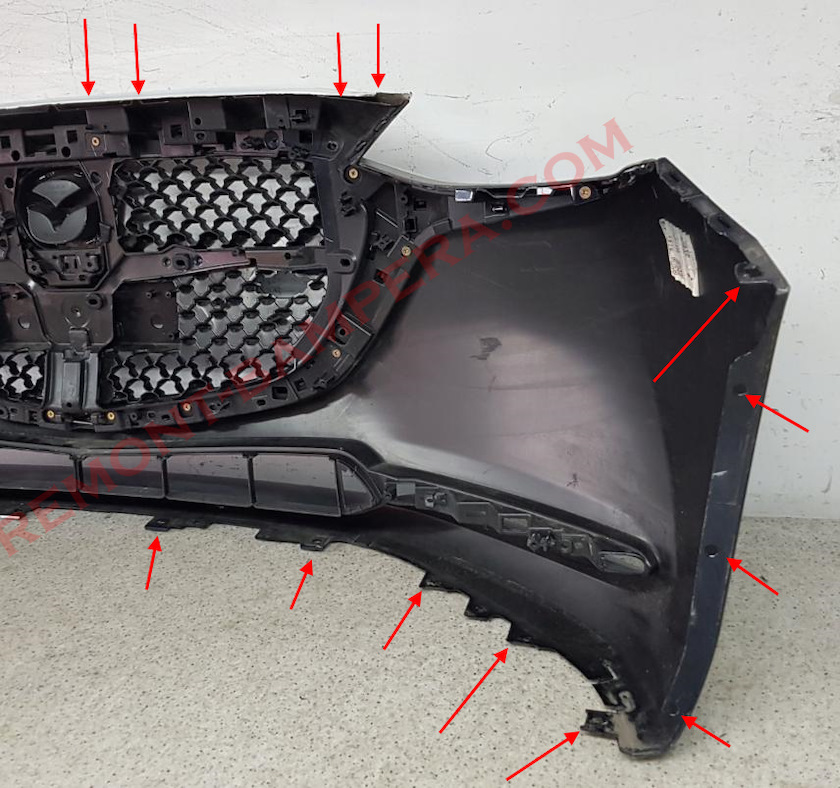
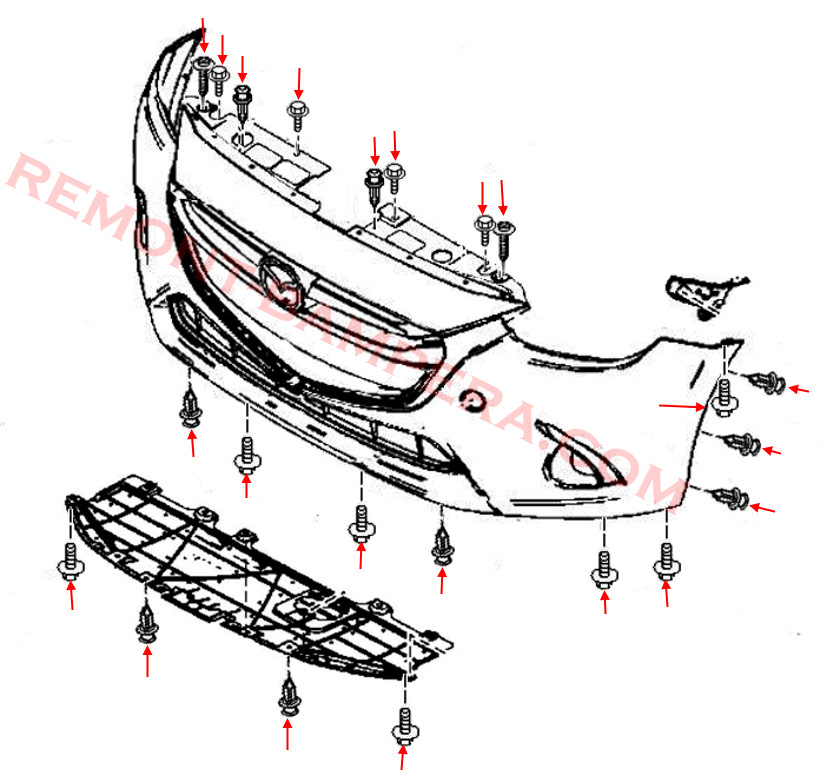
How to Remove the Rear Bumper
- Open the trunk lid.
- (Sedan) In the trunk, unscrew three nuts per side and remove the taillights.
- In the trunk opening, unscrew four screws securing the upper part of the rear bumper.
- From underneath, unscrew four screws and remove two clips (screwed and inserted from bottom to top) securing the lower section.
- In the wheel arches, remove the clips securing the fender liners.
- Behind the fender liners, unscrew one screw per side securing the corners to the brackets in the fenders.
- Release the latches in the fenders (grab the corner and pull sharply toward yourself).
- With an assistant, remove the bumper by pulling it backward (watch for wiring).
- Disconnect the parking sensor and lighting connectors (if equipped).
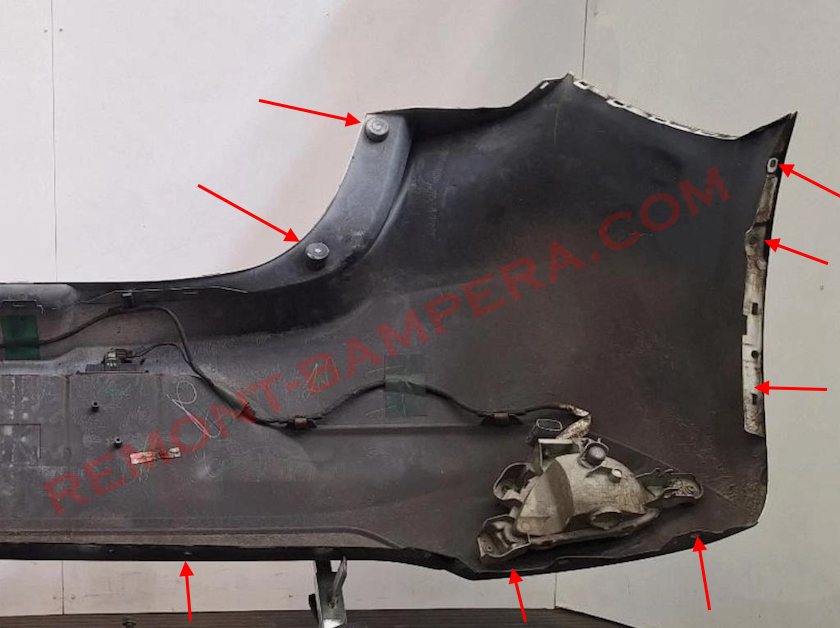
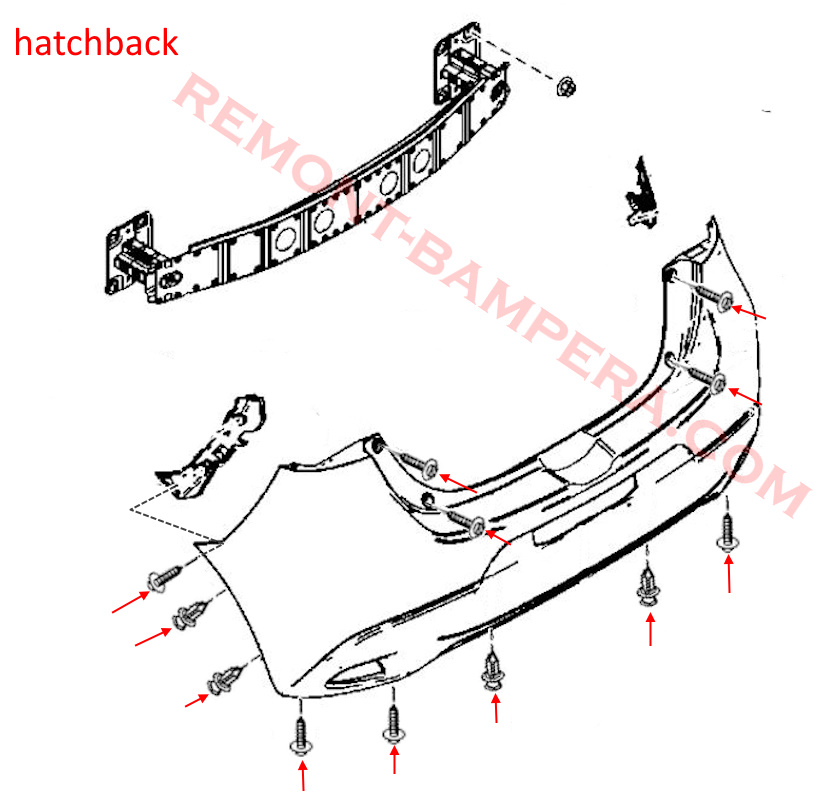
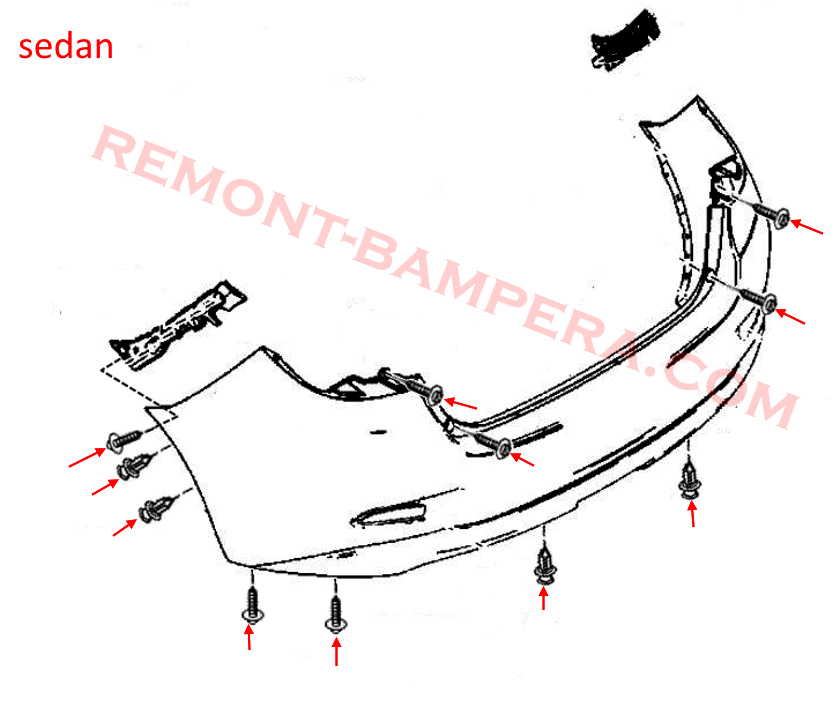
Body Type and Modifications
The main version is a 5-door hatchback, but some countries (like Mexico and the USA) offered a 4-door sedan. Engines varied by market:
- 1.5L Skyactiv-G (75–115 HP) – the most popular, with manual or automatic transmission.
- 1.5L Diesel (105 HP) – for Europe, but sales declined after the diesel scandal.
- 1.3L (older lineup) – available initially in some countries.
There was also a sport version, the Mazda 2 1.5L GT (Japan), with upgraded suspension and stylish body kit.
Model Description
The Mazda 2 MK3 is a compact urban car with vibrant KODO ("Soul of Motion") styling. It's lightweight (about 1 ton), making it agile in city traffic. The interior, while more spacious than its predecessor, remains compact.
Pros:
- Fuel-efficient (approx. 5–6 L/100 km).
- Good handling (thanks to lightweight construction and precise steering).
- Modern electronics (even base versions include a multimedia system).
Cons:
- Somewhat stiff suspension (but less body roll in corners).
- Slightly noisy at highway speeds.
Interesting Facts
- Toyota Hybrid: In 2019, the Japanese-market Mazda 2 received a hybrid system from the Toyota Yaris Hybrid.
- Rally Version: In 2016, Mazda unveiled the Mazda 2 Racing concept for amateur rallies.
- Twin Model: In the US, essentially the same car was sold as the Toyota Yaris but with different bumpers.
- No Turbo: Unlike competitors (Ford Fiesta ST, VW Polo GTI), Mazda never released a turbocharged performance version.
Conclusion
The Mazda 2 MK3 is a typical compact car that stands out for its design and driving dynamics. While it wasn't a bestseller like the Volkswagen Polo, it found its audience among those who appreciate Japanese reliability and driving enjoyment.

 English
English  Italiano
Italiano  Français
Français  русский
русский  Deutsch
Deutsch  Español
Español